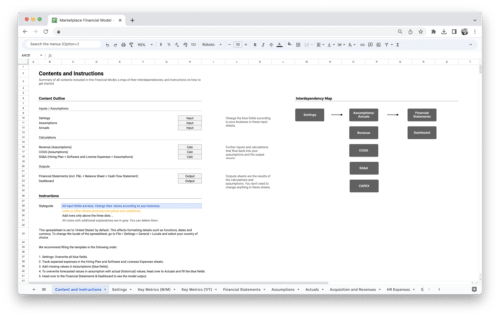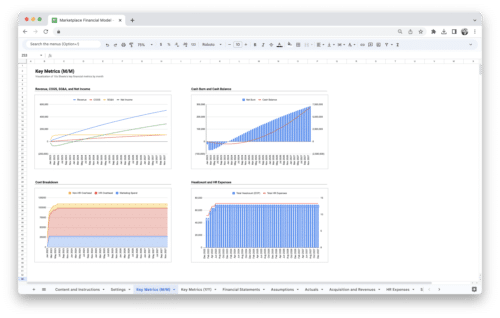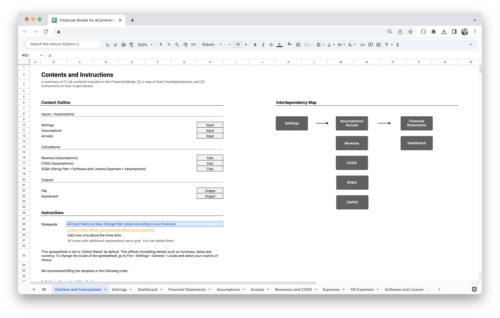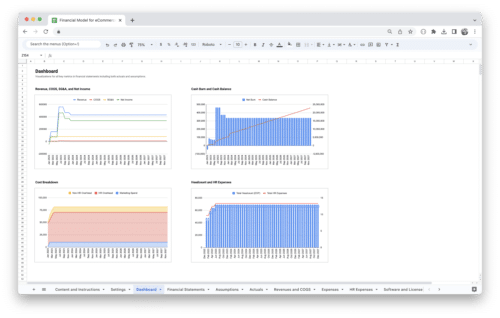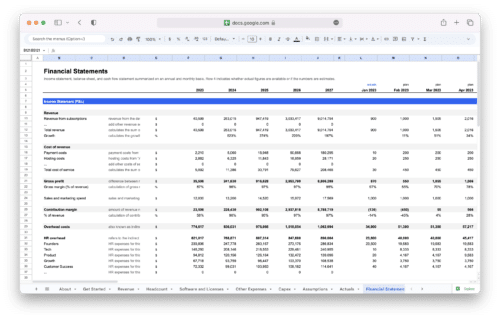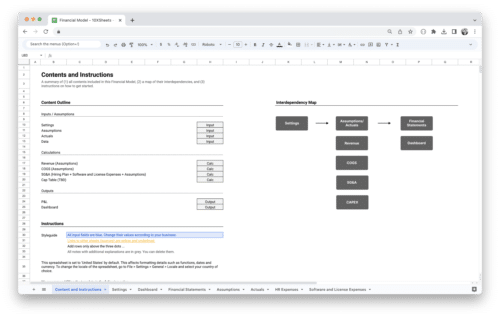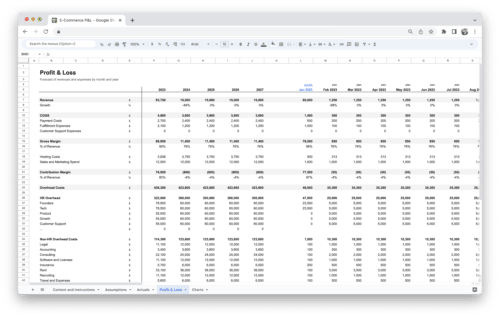
- What is the Business Life Cycle?
- The Five Stages of the Business Life Cycle
- Stage 1: Seed (Concept & Ideation)
- Stage 2: Startup (Launching the Business)
- Stage 3: Growth (Expansion and Scaling)
- Stage 4: Maturity (Stabilizing and Optimizing)
- Stage 5: Decline (Reinvention or Exit)
- Business Life Cycle Examples
- Conclusion
Have you ever wondered how businesses grow and change over time? The business life cycle is a simple yet powerful concept that explains the different stages every business goes through, from the idea stage all the way to maturity or even decline. Whether you’re starting a new company or managing an established one, understanding the life cycle helps you make smarter decisions, avoid common pitfalls, and plan for the future.
Each stage—Seed, Startup, Growth, Maturity, and Decline—has its own set of challenges and opportunities, and knowing where you are in the cycle lets you focus on what matters most. It’s not just a theory; it’s a practical tool that helps you stay ahead and keep your business moving forward, no matter where you are in the process.
What is the Business Life Cycle?
The business life cycle is a conceptual framework that outlines the different stages a business typically goes through from its inception to its eventual decline or reinvention. It reflects the various challenges and opportunities that arise as a company progresses through these stages, including the Seed, Startup, Growth, Maturity, and Decline phases. Each stage has its own set of strategic priorities and requires different approaches in terms of management, operations, and financial planning.
Understanding the business life cycle helps entrepreneurs and business owners navigate the complex journey of building and sustaining a business. It provides a roadmap for anticipating challenges, allocating resources efficiently, and making informed decisions to ensure growth and longevity.
Importance of the Business Life Cycle
- Provides a clear framework for understanding business development and growth patterns.
- Helps entrepreneurs anticipate challenges and adjust strategies accordingly.
- Allows for better resource allocation at each stage based on specific needs.
- Supports long-term sustainability by addressing evolving business priorities at each phase.
- Guides decision-making and planning, helping business owners align their actions with the company’s life stage.
Business Life Cycle Stages and Their Significance
- Seed Stage: The foundation phase, where the business idea is conceived, researched, and validated. It’s crucial for testing the market feasibility and setting up the groundwork for future operations.
- Startup Stage: The business is launched and starts to build its customer base. Focus shifts to product development, marketing, and securing early-stage funding.
- Growth Stage: The company has found product-market fit and begins scaling operations. The emphasis is on expanding revenue streams, growing the team, and increasing market share.
- Maturity Stage: The business stabilizes and focuses on optimizing operations, maintaining market leadership, and diversifying its offerings to sustain profitability.
- Decline Stage: The business experiences a slowdown in growth, requiring strategic decisions on whether to reinvent the business or exit through methods like mergers or acquisitions.
How Understanding the Business Life Cycle Helps Entrepreneurs and Business Owners
Understanding the business life cycle enables entrepreneurs and business owners to make informed decisions at each stage of their company’s journey. By recognizing the challenges specific to each phase, they can better allocate resources, avoid common pitfalls, and implement strategies designed for their business’s current needs. This knowledge also allows business owners to adjust their goals, manage risk, and seize new opportunities as their company evolves. Additionally, it empowers them to plan for the future, whether that’s continuing growth, reinvention, or preparing for a successful exit.
The Five Stages of the Business Life Cycle
The business life cycle is a conceptual framework that describes the various phases a company goes through, from its inception to its potential decline or reinvention. These stages are essential for understanding the natural progression of a business, and each phase presents unique opportunities and challenges. By recognizing where your business is within the life cycle, you can tailor your strategies to meet the specific needs of that stage, ensuring sustainable growth and long-term success.
The five stages—Seed, Startup, Growth, Maturity, and Decline—form the backbone of any business journey. Each of these stages plays a critical role in shaping the trajectory of a company, and understanding them helps you anticipate the decisions and resources required at each point. Here’s a breakdown of each stage and how it influences the overall development of your business.
Seed Stage
The Seed stage is the starting point of your business journey, often characterized by idea development and market research. It’s the phase where entrepreneurs conceptualize their business ideas, validate them through research, and start laying the groundwork for their business ventures. At this stage, you’re not yet operational but are focused on validating the potential of your idea.
The decisions made during the Seed stage are foundational for the success of the business. If you can clearly define the problem you aim to solve, identify a target market, and secure initial funding, you set your business on the path to growth. However, this stage comes with a lot of uncertainty and risk, and many ideas fail to make it past this point.
Startup Stage
The Startup stage is when your business begins to take form. You’ve already established that there’s demand for your product or service, and now it’s time to launch. In this phase, your focus shifts from idea development to actual execution. You’ll develop your product or service, build your team, and engage in customer acquisition.
This stage is about testing the market, building brand recognition, and fine-tuning your offering based on feedback. Many startups face significant financial and operational challenges at this stage, from securing sufficient capital to managing cash flow, but overcoming these hurdles is a crucial part of laying the foundation for future success.
Growth Stage
Once your business has gained some traction and has a proven product-market fit, you enter the Growth stage. At this point, your focus is on scaling the business—expanding operations, increasing revenue, and acquiring new customers. Growth often involves improving systems and processes, expanding product lines or services, and investing in marketing and brand awareness campaigns.
The Growth stage is often the most exciting phase for entrepreneurs because it brings increased revenue and visibility. However, it also requires careful management to handle the growing complexity of operations. Hiring the right talent, expanding your infrastructure, and maintaining customer satisfaction are critical to ensuring that growth doesn’t outpace your ability to manage it effectively.
Maturity Stage
The Maturity stage represents the point where your business has reached stability and a more predictable path of success. In this phase, growth tends to slow down as you’ve captured a significant share of the market. While revenues remain strong, you may see fewer opportunities for exponential growth. Instead, the focus shifts to efficiency—optimizing processes, managing costs, and retaining customers.
At the Maturity stage, businesses face new challenges, such as market saturation and the need for innovation to maintain relevance. The challenge is to preserve profitability while keeping up with competition and avoiding stagnation. This stage can last for a while, but businesses must continually adapt to remain successful in a changing marketplace.
Decline Stage
Eventually, most businesses face a period of decline, whether due to market saturation, changing consumer preferences, or competition. The Decline stage is characterized by a drop in revenue, market share, or profitability. However, decline doesn’t always mean failure. Many businesses use this time to reinvent themselves, explore new markets, or pivot their strategies.
For some, the Decline stage leads to an exit—either by selling the company, merging with another business, or liquidating assets. For others, it may prompt a reinvention or rebranding effort to re-enter growth. Deciding whether to reinvent or exit can be one of the most challenging decisions an entrepreneur faces.
Each stage of the business life cycle influences the decisions you make, from product development to team building, funding strategies, and marketing approaches. Understanding where you are in the life cycle helps you determine the best course of action to keep your business moving forward and adapt to changing conditions.
Stage 1: Seed (Concept & Ideation)
The Seed stage is the very beginning of your entrepreneurial journey. It’s where everything starts—from the initial spark of an idea to the early efforts of laying the groundwork for your business. During this phase, the primary focus is on planning, research, and idea validation. You’re still in the exploration phase, testing whether your business concept is viable and has the potential for success. This stage requires careful thought and attention, as the choices you make here can significantly impact the direction of your business in the years to come.
Early Planning and Research
The Seed stage is marked by the crucial task of defining your business idea and conducting research to ensure there is a real opportunity in the market. This is where you determine whether there is a problem worth solving and if your solution can attract enough demand to become a sustainable business.
A key part of early planning is:
- Understanding the Problem: It all starts with identifying a problem or pain point that your business aims to solve. Whether it’s something you’ve personally experienced or observed in the market, defining this problem clearly will guide every decision you make from here on.
- Market Research: This involves investigating your target audience and assessing whether your product or service addresses their needs. By analyzing your potential customers’ behaviors, preferences, and challenges, you can create a more tailored solution.
- Competitive Analysis: Research your competition to understand how others are addressing the same problem. This can help you identify gaps in the market, differentiate your product, and determine your unique selling proposition (USP).
At this stage, you’re testing assumptions and gathering information to ensure that your business idea is not just a good idea but also a feasible one.
Feasibility Studies and Idea Validation
Once you’ve established the groundwork, it’s time to validate your business idea. Feasibility studies help determine whether the concept can be turned into a real business. This includes assessing the financial viability, technical feasibility, and market potential.
A feasibility study often includes:
- Financial Feasibility: Can you build and sustain the business with the resources you have or can raise? This is when you estimate your startup costs, potential revenue, and expected profitability.
- Technical Feasibility: Do you have the resources, technology, and expertise to develop the product or service you envision? This is especially important if you’re launching a tech-based business.
- Market Feasibility: Is there a clear market for your product or service? This involves determining if enough customers are willing to pay for your solution and if the market is large enough to support growth.
By validating your idea, you minimize the risk of failure later on. If your idea doesn’t hold up during this phase, it’s better to pivot or abandon it before committing significant time or money.
Challenges and Opportunities for New Entrepreneurs
While the Seed stage offers tremendous opportunities to innovate and create something new, it also presents significant challenges. As a new entrepreneur, you’ll face hurdles that can test your resilience and determination.
Challenges include:
- Uncertainty and Risk: At this stage, most of your decisions are based on assumptions and predictions. There is no concrete evidence yet that your business will succeed, and the risk of failure is high.
- Securing Funding: Many new entrepreneurs struggle to secure financing at the Seed stage, as investors tend to be wary of risk. Without a proven track record, it can be difficult to convince others to back your idea.
- Lack of Experience: You might be new to entrepreneurship, and the journey is filled with obstacles you may not be prepared for. Building a solid network of mentors, advisors, or a founding team with experience can make a big difference.
However, there are plenty of opportunities at this stage if you handle these challenges well:
- Innovation: The Seed stage is your chance to disrupt markets and create something new. With fresh ideas and innovations, you have the opportunity to carve out a niche for yourself and create a brand that resonates with customers.
- Market Validation: If you can prove your concept early on by validating your idea with real feedback from potential customers, you’ll be in a much stronger position when you move to the next phase.
- Low Initial Investment: The Seed stage allows you to start small. With minimal overhead costs and fewer moving parts, you can work on your idea with fewer financial pressures compared to later stages.
During the Seed stage, the key is to validate your business idea through research and testing while carefully planning for the future. This stage lays the foundation for everything that comes next, and while it’s filled with challenges, it also holds the potential for great rewards if you approach it thoughtfully.
Stage 2: Startup (Launching the Business)
The Startup stage marks the exciting shift from conceptualization to execution. This is when your idea becomes a reality and you begin the journey of turning your vision into a business that serves real customers. It’s no longer about planning—it’s time to build, launch, and test your product or service in the market. The primary goal during the Startup stage is to get your product or service off the ground and begin creating traction with your first customers.
While this stage is filled with action and opportunity, it’s also a time of significant challenges. The risks are high, and the resources you have available are limited. However, this is the stage where your hard work pays off, and the foundation of your business is truly formed. Let’s dive into the key activities and strategies that will guide you through the Startup phase.
Developing a Minimum Viable Product (MVP) or Service
The MVP is at the heart of the Startup stage. It’s the first version of your product or service that’s good enough to launch and test with real customers. The goal of an MVP is to quickly introduce your offering to the market while keeping costs low and learning from real-world feedback. You don’t need to have a perfect product at this stage—what matters is proving that your idea has value and addressing the core needs of your target audience.
Building an MVP involves:
- Focusing on Core Features: Identify the essential features that solve the primary problem for your customers. The MVP should focus on delivering the core value proposition with minimal additional features.
- Gathering Early Feedback: Once your MVP is in the hands of real customers, you’ll need to gather feedback to understand how well it works, what customers like, and where improvements can be made. The feedback loop is critical at this stage for iterating on the product.
- Testing Assumptions: The MVP allows you to test your key assumptions about your business model, product-market fit, and user demand. This can help you pivot or refine your offering if needed.
By keeping things simple and focusing on a quick, cost-effective launch, you’ll be able to learn faster, improve your product, and move toward scaling more efficiently.
Building a Team and Initial Business Infrastructure
At the Startup stage, you can’t do everything on your own. You need a small but strong team that can help you turn your vision into a functional business. Building a team is one of the most important decisions you’ll make, as the right people can complement your skills and bring expertise to areas you may be lacking in.
- Hiring Key Roles: At this stage, your team should be lean and flexible. You may not have the resources to hire full-time employees for every role, but it’s important to bring in people who bring specific expertise to your business. This could include co-founders, early hires, or contractors in areas like development, marketing, and customer support.
- Company Culture: It’s crucial to establish the values and culture that will drive your business forward. While your team might be small, creating a positive work environment and establishing clear communication from the start will help foster a sense of shared purpose.
- Building the Infrastructure: This includes creating the tools and systems necessary to run your business, such as setting up your website, establishing a CRM system, managing customer communications, and developing basic financial systems for accounting and billing.
A well-rounded team and solid infrastructure will allow you to execute your plans and scale when the time comes. It’s also important to remain agile—your team should be adaptable as you continue testing and refining your product.
Establishing a Market Presence and First Sales
Now that you have a working MVP, it’s time to go to market. Establishing a market presence involves letting your target audience know who you are, what you offer, and why they should care. This is your opportunity to start building brand awareness, creating an identity for your business, and acquiring your first customers.
Key steps for establishing a market presence include:
- Branding and Messaging: Develop a clear brand identity, including a logo, tone of voice, and key messaging that resonates with your audience. Your messaging should be focused on how your product or service addresses a specific problem for your customers.
- Digital Marketing: Leverage digital marketing channels such as social media, content marketing, search engine optimization (SEO), and paid ads to reach potential customers. Online platforms offer cost-effective ways to build awareness and generate leads.
- Sales Strategy: Even in the early stages, you need a sales strategy to convert leads into customers. This may involve direct outreach, cold emailing, or leveraging referral programs. Your sales process should be as efficient and scalable as possible to accommodate growth.
The goal during this phase is to secure your first paying customers. Early sales help validate your offering and give you the revenue you need to reinvest in your business. Word of mouth from these first customers can also be a powerful tool for attracting more customers.
Early-Stage Funding and Securing Capital
In the Startup stage, funding becomes critical. Launching a business requires significant investment in product development, marketing, and operational costs. At this point, you may have exhausted your personal savings or bootstrapped the initial stages, but to scale and sustain operations, you’ll need to secure additional capital.
There are several funding options to explore during this stage:
- Bootstrapping: Many founders choose to fund their startups with their personal savings or income from another job. While this allows you to maintain full control, it also carries personal financial risk.
- Angel Investors: Angel investors are individuals who provide early-stage funding in exchange for equity or debt. They are often more willing to take risks on startups than traditional venture capitalists.
- Crowdfunding: Platforms like Kickstarter and Indiegogo allow you to raise money by pre-selling your product to backers. Crowdfunding can also help you validate your idea and build a community of early adopters.
- Venture Capital (VC): If your startup has significant growth potential, you may be able to secure venture capital funding from firms that specialize in high-risk, high-reward investments. VC funding can provide the capital needed to scale quickly, but it often comes with the trade-off of giving up some control and equity.
Successfully securing funding can provide the runway needed to scale your business and reach new milestones. It’s essential to present a compelling case to investors, with a clear business model, strong market validation, and a roadmap for growth.
The Startup stage is where you take your first steps into the real world of business. It’s a time of experimentation, learning, and relentless effort. If you can navigate the challenges and lay a solid foundation, you’ll be well on your way to turning your vision into a successful business.
Stage 3: Growth (Expansion and Scaling)
The Growth stage is where your business moves beyond its initial success and enters the exciting phase of scaling. This is when you’ve found product-market fit, and now you focus on expanding your operations, increasing revenue, and capturing a larger share of the market. However, growth isn’t just about boosting sales—it’s about setting your business up for long-term success and sustainability. The challenges become more complex, and the systems you built in the early stages need to be optimized for larger-scale operations.
In this phase, your goal is to manage rapid growth efficiently while ensuring that the quality of your product, customer satisfaction, and company culture remain intact. Strategic planning and effective execution are crucial as you work toward scaling in a way that keeps your business agile and competitive.
Scaling Operations, Increasing Revenue, and Market Share
As your business experiences growth, you need to scale your operations to meet increasing demand. This means expanding your infrastructure, improving processes, and finding ways to increase efficiency. It’s essential to balance growth with sustainability, ensuring that your systems are in place to support a larger operation without sacrificing quality.
Scaling your operations involves:
- Optimizing Production Capacity: As demand grows, you’ll need to scale up production or service delivery. This may involve investing in new equipment, upgrading technology, or expanding your physical space. For service-based businesses, this could mean refining workflows, enhancing service offerings, or adding new service lines.
- Streamlining Processes: To handle the increasing volume of orders, customers, and transactions, it’s crucial to streamline operations. Automation tools, software systems, and improved logistics will allow you to handle more with fewer resources.
- Increasing Revenue Streams: Diversifying your revenue streams is a smart strategy for growth. This could involve introducing complementary products or services, expanding to new markets, or adjusting your pricing model. By offering more to your existing customers and attracting new ones, you can generate more revenue without overextending your resources.
Increasing your market share requires more than just expanding your operations. It involves strengthening your brand, positioning, and value proposition so you can stand out in a competitive market. Focus on identifying new customer segments, entering new geographic regions, or outpacing competitors with better offerings.
Managing Growing Customer Demand and Expanding the Product Line
As your customer base grows, the demand for your product or service will likely increase. Managing this growing demand without compromising quality or customer satisfaction is one of the biggest challenges during the Growth stage. The key to success is in developing systems that allow you to scale without losing sight of your customers’ needs.
Effective management includes:
- Customer Support Systems: With a growing customer base, it’s critical to maintain a high level of customer service. You’ll need to implement better customer support systems, whether through expanding your support team, integrating live chat services, or using CRM (Customer Relationship Management) tools to track customer interactions.
- Managing Customer Expectations: As your brand becomes more popular, customer expectations also rise. It’s important to ensure that you can consistently meet or exceed these expectations in terms of delivery times, quality, and support.
- Expanding the Product Line: Growth is often an opportunity to expand your product offerings. By listening to customer feedback and identifying gaps in the market, you can develop complementary products or services that appeal to your existing customer base. This expansion could include variations of your current product, upgrades, or entirely new products that solve related problems for your customers.
Expanding your product line thoughtfully helps strengthen customer loyalty and increases the lifetime value of each customer. It also provides a way to tap into new markets or customer segments.
Hiring Key Personnel and Strengthening Company Culture
As your business grows, so does the need for a talented, dedicated team that can handle the increased complexity of operations. In the Growth stage, you need to focus on hiring key personnel who can contribute to the business’s expansion and success.
Important aspects of this stage include:
- Strategic Hiring: Hiring the right people is critical at this stage. As your team expands, you’ll need to bring in specialists—whether in sales, marketing, operations, or finance—who can bring their expertise to help scale the business. These individuals will play a crucial role in supporting the growth and ensuring that operations run smoothly.
- Leadership Development: It’s not just about hiring, but also about developing leadership within your team. As your business grows, your leadership team should expand as well. Building a strong leadership structure will ensure that there’s clear direction and accountability at all levels.
- Company Culture: Maintaining company culture during rapid growth can be challenging, but it’s essential for long-term success. As you hire more people, it’s important to clearly communicate the values and vision of your business. Company culture is a key factor in employee engagement, retention, and performance, so focus on building a culture that aligns with your mission.
- Employee Retention: As you scale, it’s also important to invest in employee satisfaction and retention. Ensure that your team members are motivated, feel valued, and have room for growth within the company. Offering professional development opportunities, competitive compensation, and work-life balance can help prevent high turnover rates.
A strong team and a positive company culture will help your business manage the growing pains of expansion and keep employees committed to your vision.
Financial Management During Expansion
Managing your finances effectively during the Growth stage is crucial. As you expand, you may face higher operational costs, increased investment in infrastructure, and the need for more working capital to support larger inventories or expanded teams. It’s essential to keep a close eye on cash flow and ensure that you have enough liquidity to fund your growth without overextending yourself.
Key financial strategies include:
- Cash Flow Management: As your business grows, the volume of transactions increases, and maintaining positive cash flow becomes more challenging. It’s important to keep track of accounts receivable and payable, and plan for seasonal fluctuations in demand. Managing cash flow wisely ensures that you can cover operational expenses and reinvest in your business.
- Profitability and Cost Control: While you’re focused on growth, it’s essential to keep an eye on profitability. Scaling doesn’t mean spending without limits. Keeping operational costs under control and ensuring that each step of the expansion contributes to profitability will allow you to sustain growth long-term.
- Securing Additional Funding: As your business grows, you may need additional capital to fund expansion efforts. This could involve securing additional rounds of funding, whether through venture capital, loans, or grants. It’s important to assess your financial needs and explore different funding options carefully to avoid taking on too much debt or giving away too much equity.
Efficient financial management ensures that you can scale at the right pace, invest in the right areas, and continue building a profitable, sustainable business.
The Growth stage is an exhilarating time for entrepreneurs, full of new opportunities and challenges. With the right strategies in place—whether for scaling operations, expanding your product line, building a strong team, or managing finances—you can set your business up for long-term success and prepare it for even greater achievements in the future.
Stage 4: Maturity (Stabilizing and Optimizing)
The Maturity stage represents a period of stability for your business. You’ve navigated through the initial growth phases, and now your focus shifts to sustaining and optimizing your operations while maintaining market leadership. Growth may slow as the market becomes more saturated, but with the right strategies, your business can continue to thrive in a competitive landscape. This stage is about fine-tuning your processes, strengthening your brand, and positioning your business for long-term success.
While there is less urgency than during the earlier stages, the Maturity stage presents unique challenges, such as increasing competition and the risk of market stagnation. The key to success here is balancing efficiency with innovation, ensuring that your business remains relevant and continues to deliver value to your customers.
Optimizing Operations and Processes for Efficiency
As your business matures, the focus shifts toward increasing efficiency and streamlining operations. At this stage, your systems and processes should be well-established, but there’s always room for improvement. Optimizing operations is essential to maintaining profitability and delivering consistent value, especially as you scale.
Effective optimization involves:
- Process Automation: Implementing automation tools across various business functions—such as customer service, marketing, inventory management, and accounting—can significantly improve efficiency. Automation allows your team to focus on high-value tasks while reducing manual work and the risk of errors.
- Data-Driven Decision Making: Leveraging data analytics and business intelligence tools helps you monitor performance, identify inefficiencies, and make informed decisions. Whether it’s tracking sales trends, customer behavior, or operational costs, data-driven insights allow you to optimize processes for maximum productivity.
- Supply Chain Management: As your operations grow, managing the supply chain efficiently becomes crucial. By optimizing inventory, improving supplier relationships, and utilizing logistics technology, you can reduce costs and ensure a smooth flow of products or services.
- Cost Control: While profitability is typically strong during the Maturity stage, managing costs effectively is still crucial. Look for areas where you can cut unnecessary expenses without sacrificing quality or customer experience. This might include renegotiating vendor contracts, consolidating operations, or eliminating inefficiencies in production.
Streamlining operations and reducing waste is essential to preserving margins and ensuring the long-term sustainability of your business.
Maintaining Market Leadership and Brand Strength
At the Maturity stage, your company likely holds a solid position in the market, but maintaining that leadership requires continuous effort. As competitors emerge and market conditions shift, your brand must remain strong, relevant, and differentiated from others in the industry.
Strategies for maintaining market leadership include:
- Brand Consistency: A strong, consistent brand message helps reinforce your company’s values and identity in the eyes of your customers. This includes maintaining visual consistency across marketing materials, messaging that aligns with your company’s mission, and ensuring a consistently positive customer experience.
- Customer Loyalty Programs: Retaining existing customers is more cost-effective than acquiring new ones. Loyalty programs, personalized offers, and exceptional customer service can help strengthen relationships with your customer base and increase lifetime value.
- Thought Leadership: Positioning your company as a thought leader in your industry can help maintain brand strength. By creating valuable content, sharing insights, and leading discussions on key industry trends, you reinforce your authority and relevance in the marketplace.
- Adapting to Market Trends: Even though your business is established, it’s important to stay ahead of trends and adapt to changes in consumer behavior, technology, or regulations. Regular market analysis and customer feedback help you stay connected to your audience and adjust your strategies accordingly.
Strong market leadership is about continuously reinforcing the value of your brand while remaining attuned to your customers’ evolving needs and preferences.
Diversifying Products or Services for Continued Growth
While the Maturity stage often brings slower growth, diversifying your product or service offerings can reinvigorate your business and provide new avenues for expansion. By broadening your offerings, you not only attract new customers but also increase your business’s resilience against market fluctuations or changing demand.
Diversification strategies might include:
- New Product Lines or Features: Introducing complementary products or new features to existing offerings allows you to tap into different customer segments. This could be an expansion of your current product or service portfolio or an entirely new product that addresses an emerging customer need.
- Geographic Expansion: If your business is primarily focused on one region or market, consider expanding into new geographic areas. This could involve moving into new cities, countries, or international markets where your brand or product could fill an unmet need.
- Targeting New Customer Segments: Even if your business has already established a strong base in one customer segment, there may be other groups that could benefit from your offering. For example, if your product targets a particular demographic, you could explore how it might be adapted or marketed to a different audience.
- Strategic Partnerships and Acquisitions: Another form of diversification is entering into partnerships or making acquisitions that expand your capabilities or product offerings. By joining forces with complementary businesses, you can offer more value to customers and reduce the risks associated with relying on a single product or market.
Diversification helps mitigate risks associated with market saturation and keeps your business agile in the face of change.
Strategies for Managing Competition and Market Saturation
As your business matures, market competition becomes more intense. New players enter the market, and existing competitors continue to refine their offerings. Market saturation can also slow down growth, making it harder to capture new customers. In this stage, effective competitive strategies are essential to maintain your market position.
Key strategies for managing competition include:
- Continuous Innovation: Innovation doesn’t stop after product launch. Whether it’s improving existing products, introducing new features, or adopting new technologies, staying ahead of the competition requires constant innovation. By reinvesting in your product or service, you show customers that your brand is always evolving.
- Customer-Centric Approach: Maintaining a deep understanding of your customers’ needs and pain points allows you to develop solutions that resonate with them. Offering personalized experiences, excellent customer service, and tailored solutions helps differentiate your business in a crowded market.
- Cost Leadership: As market competition increases, having a cost-effective approach to production and service delivery can help you maintain profitability. This could involve improving operational efficiency, leveraging economies of scale, or finding ways to reduce costs while maintaining quality.
- Strategic Pricing: Adjusting your pricing strategy based on market conditions and competitor pricing is an effective way to stay competitive. Whether through promotional pricing, bundling, or offering tiered pricing options, strategic pricing can help you attract new customers while maintaining margins.
- Brand Advocacy: Building a loyal customer base that actively advocates for your brand is one of the most powerful ways to outpace competition. By fostering a community around your product, encouraging referrals, and rewarding brand advocates, you can turn your customers into your strongest marketing tool.
Navigating competition and market saturation is a challenge, but by continuously evolving your business and staying customer-focused, you can maintain your leadership position and continue to grow, even in a mature market.
The Maturity stage is a time for refining your processes, reinforcing your brand, and making strategic moves to ensure long-term sustainability. By focusing on operational efficiency, diversifying your offerings, and managing competition effectively, you can continue to lead the market while positioning your business for the future.
Stage 5: Decline (Reinvention or Exit)
The Decline stage is an inevitable part of the business life cycle. No matter how successful a company has been, it’s possible for it to eventually face a decline in revenue, market share, or profitability. This stage presents difficult decisions for business owners and leaders, as it’s a time when the company’s future is uncertain. However, decline doesn’t always spell failure. For some businesses, it’s an opportunity to reinvent themselves, explore new markets, or change their approach to stay relevant. For others, it may be time to consider exiting the business and moving on to new opportunities.
Whether your business is facing a slow decrease in performance or a rapid loss of market share, the Decline stage requires careful management. The key is recognizing the signs of decline early, evaluating your options, and deciding the best course of action.
Signs of Decline and the Causes
Decline can manifest in various ways, and recognizing the signs early is crucial for determining the right response. Often, businesses don’t notice the decline until it’s too late, but there are clear indicators to watch for that suggest a company may be in trouble.
Common signs of decline include:
- Decreasing Revenues: A consistent drop in sales, especially over an extended period, is one of the most obvious signs of decline. This could be due to shrinking market demand, a saturated market, or increased competition.
- Customer Loss or Dissatisfaction: If your customer base begins to shrink or show dissatisfaction with your products or services, this is a clear sign that something is wrong. Negative reviews, poor customer retention, and declining loyalty are all indicators that your business is losing touch with its audience.
- Increased Competition: As the market becomes more competitive, businesses that once had a unique advantage may find it eroding. If new entrants or innovative competitors are offering better or cheaper alternatives, your market share can begin to dwindle.
- Innovation Gaps: When a business fails to innovate or adapt to changing customer expectations or technological advancements, it can quickly fall behind. Businesses that don’t evolve with the times often face the risk of becoming irrelevant.
- Declining Profit Margins: Even if your business is generating revenue, declining profit margins can indicate underlying issues, such as rising costs, inefficiencies, or pricing pressures that are unsustainable long-term.
- Operational Inefficiencies: If your operations become sluggish, with bottlenecks, customer complaints, or missed deadlines, it can signal that your business is struggling to manage the scale it once did.
Understanding these signs allows business leaders to take proactive steps toward addressing the causes of decline. Whether the issues are internal (e.g., outdated systems or management) or external (e.g., shifts in customer preferences or economic conditions), recognizing them early on gives you the chance to turn things around or prepare for a graceful exit.
Exploring Strategies for Reinvention or Pivoting the Business
When a business enters the Decline stage, it doesn’t necessarily mean the end is near. Many companies have successfully reinvented themselves by pivoting their business model, launching new products, or repositioning their brand to capture new opportunities.
Reinvention strategies might include:
- Business Model Pivot: A shift in business model can help you adapt to changing market conditions. For example, if your traditional product-based model is no longer viable, you could pivot to a subscription model, or instead of selling products, you might explore offering services.
- Targeting New Markets: If your current market is becoming saturated or shrinking, consider targeting new customer segments or geographic areas. Expanding into international markets, for instance, could provide new sources of revenue and revitalize growth.
- Product Innovation: Often, declining businesses struggle because they have failed to innovate. Introducing new features, improving existing products, or developing entirely new offerings can reignite customer interest and restore relevance in the marketplace.
- Digital Transformation: In today’s business environment, adopting digital tools and strategies can make a big difference. This might involve shifting your business online, improving your e-commerce platform, or integrating advanced technologies like AI, automation, or data analytics to improve efficiency and customer experience.
- Rebranding: Sometimes, a business simply needs a fresh identity. A rebranding effort—such as a new logo, updated messaging, or a shift in the company’s values—can signal to customers that the business is evolving and open to change. Rebranding also helps distance the company from any negative associations that may have accumulated over time.
Reinvention can help your business recover and thrive again, but it requires a clear vision, a willingness to adapt, and a deep understanding of what your customers need.
Exit Strategies: Mergers, Acquisitions, or Selling the Business
If reinvention or pivoting isn’t a viable option, or if you simply choose to exit the business for personal reasons, there are several exit strategies to consider. These strategies are aimed at extracting value from the business, whether through a merger, acquisition, or outright sale.
Common exit strategies include:
- Mergers and Acquisitions (M&A): Merging with or being acquired by another company can be a way to exit while still preserving some value in the business. M&As are often pursued when a company has complementary strengths or assets that make the merger attractive to potential buyers. This could also be a way to ensure continuity for employees and customers, as the merged entity may continue operations under a new structure.
- Selling to a Competitor: Selling your business to a competitor can be a strategic move, especially if your business holds value in terms of market share, customer base, or intellectual property. A competitor might be willing to buy your business to eliminate competition or enhance their own offerings.
- Selling to a Private Equity Firm: Private equity firms often acquire businesses that are underperforming or in decline, with the goal of turning them around and selling them for a profit. If you’re looking to exit and want to ensure that your business gets a second chance under new ownership, this could be a suitable option.
- Employee Buyout: If you have a dedicated team and want to ensure the business stays in the hands of those who know it best, an employee buyout might be the right option. This allows your employees to take over ownership and continue running the business, while you step away.
- Liquidation: If other exit options aren’t viable, liquidation is the final option. This involves selling off the business’s assets, such as property, inventory, and equipment, and using the proceeds to pay off debts. While this may not yield the highest value, it’s a way to close the business and move on.
Selecting the right exit strategy depends on the specific circumstances of your business, your personal goals, and the financial health of the company.
How to Gracefully Exit and Exit Options for Owners
Exiting a business—whether through a sale, merger, or liquidation—requires careful planning to ensure a smooth transition. A graceful exit involves minimizing disruption to employees, customers, and stakeholders, while also ensuring that the owner achieves their financial and personal goals.
Steps to a graceful exit include:
- Planning Early: It’s important to start planning your exit strategy well before you’re ready to step away from the business. This might include seeking advice from financial advisors, lawyers, and business consultants to determine the best approach.
- Communicating with Stakeholders: Whether you’re selling the business or closing it down, transparency with your employees, customers, and suppliers is key. Open communication helps manage expectations and ensures that everyone understands the process.
- Valuation and Negotiation: If you’re selling or merging, getting a fair valuation of your business is crucial. Work with professional valuators and legal advisors to ensure that the terms of the sale or merger are favorable.
- Post-Exit Transition: Even after the exit, there may be a transition period where you help the new owners take over or ensure that the business continues smoothly. Whether you’re remaining in an advisory role or simply providing guidance, a positive post-exit transition can ensure the business remains stable.
A well-planned and executed exit not only benefits the business but also ensures that you, as the owner, are able to move on to the next chapter in your life with minimal complications.
The Decline stage may be challenging, but it also offers opportunities for reinvention or a dignified exit. By recognizing the signs of decline early, exploring strategies for reinvention, or considering the right exit option, you can ensure that you make the best decisions for both your business and yourself.
Business Life Cycle Examples
The Business Life Cycle is a framework that applies to businesses across industries, and seeing real-world examples can help make the concept clearer. Every business goes through these stages in its own unique way, but the general progression remains the same. Let’s look at a few examples to better understand how different businesses navigate the life cycle, from small startups to well-established companies.
Example 1: A Tech Startup
Consider a tech startup that launches a mobile app aimed at helping people track their fitness goals.
- Seed Stage: The founder has an idea for a fitness tracker app but needs to validate whether people would actually use it. After conducting surveys, talking to potential customers, and researching competitors, the founder decides to move forward with the project. They spend a few months planning the app’s features and gathering initial funding from friends and family.
- Startup Stage: The app is launched with basic features that allow users to log workouts, track calories, and set goals. The founder focuses on building an initial user base through social media marketing and influencer partnerships. Feedback from the first users is crucial, and early-stage funding from angel investors helps keep the app running as they refine the features.
- Growth Stage: The app gains popularity, and the team expands. New features are added, such as integration with wearable devices and social sharing options. Revenue starts flowing in through premium subscriptions, and the app is gaining more attention from larger investors. The startup hires additional developers and marketing professionals to support its rapid growth.
- Maturity Stage: The app has captured a large portion of the fitness market. However, growth slows down as the market becomes saturated with similar fitness apps. To maintain its edge, the company introduces new features like personalized coaching and expanded diet tracking. Brand loyalty programs are launched, and customer retention becomes a priority.
- Decline Stage: After years of success, the company faces increasing competition from bigger brands, and its market share begins to drop. The app is no longer as innovative as it once was, and customers start to flock to newer, more feature-rich competitors. The business has to decide whether to reinvent the product, merge with a competitor, or exit the market.
Example 2: A Local Coffee Shop
Let’s take a look at a small local coffee shop in a busy neighborhood.
- Seed Stage: The owner identifies a gap in the market for high-quality, locally roasted coffee. After researching the local market and gathering data on potential customers’ preferences, the owner secures a small loan and begins setting up the coffee shop. They plan a cozy, welcoming space with a focus on organic, fair-trade coffee.
- Startup Stage: The coffee shop opens with a small but loyal group of customers. Marketing is focused on local word-of-mouth, and the shop offers promotions like “buy one, get one free” to attract new customers. The shop starts gaining traction, with regulars returning for their morning coffee and chatting about the neighborhood.
- Growth Stage: As word spreads, the coffee shop begins to attract more customers. The owner decides to expand the menu to include sandwiches and pastries, increasing sales. The team grows to include additional baristas and support staff. The business is able to secure a small loan for better equipment and to improve the layout of the space.
- Maturity Stage: The coffee shop is a staple in the community, with a strong following and regular customers. Sales plateau, as the market for high-end coffee in the neighborhood has become competitive. The shop focuses on maintaining its customer base by improving its loyalty program, hosting events, and offering exclusive items. The coffee shop also explores expanding to a second location, though it recognizes the risks involved.
- Decline Stage: A chain coffee shop opens nearby, offering lower prices and a similar quality product. Customer traffic begins to decline, especially during slower hours. The owner evaluates the business’s future and considers reinvention strategies, such as introducing a unique local blend or focusing on creating a more exclusive experience for coffee enthusiasts. Alternatively, they may decide to sell the business to the larger chain or another interested buyer.
Example 3: A Global Retail Brand
Take a well-known retail company that sells clothing and accessories both online and in physical stores.
- Seed Stage: The company starts by selling a niche product—stylish yet affordable workwear. After researching fashion trends and consumer behavior, the founder develops a simple website to sell directly to customers. They use online surveys and focus groups to gather insights before launching.
- Startup Stage: The brand launches with a small, online-only presence. Social media marketing is central to attracting its target audience, and the founder uses influencer partnerships to showcase the products. Early revenue is modest, but positive feedback from customers provides confidence to scale up.
- Growth Stage: The brand’s growth accelerates as it gains recognition and expands its product range. The company hires more staff, opens its first physical store, and starts advertising on larger platforms. Sales skyrocket as the business reaches a broader audience, and the company secures venture capital to help fund its expansion.
- Maturity Stage: The company is now a well-established player in the fashion market, with a strong online and offline presence. However, as competitors enter the market and consumer preferences change, the company’s growth slows. To stay relevant, it introduces new collections, collaborates with celebrities, and improves its sustainability practices. The brand also explores entering international markets to keep expanding.
- Decline Stage: Despite its strong history, the brand struggles with changing consumer behavior and increasing competition from fast-fashion retailers. Sales begin to decline, and the company faces declining profit margins. The leadership team evaluates whether to reinvent the brand, invest in digital transformation, or consider selling to a competitor.
Example 4: A SaaS (Software as a Service) Company
A cloud-based project management tool that helps small businesses and freelancers manage their teams and projects.
- Seed Stage: The founders develop the initial software solution after recognizing a gap in the project management software market. They create a basic version of the tool and validate it through feedback from a small group of beta users. Initial funding is secured through a friends-and-family round.
- Startup Stage: The software is launched publicly, with a focus on small businesses and freelancers. The company uses a freemium model to attract users, offering basic features for free while charging for premium upgrades. The founders engage in aggressive marketing through online ads and content marketing, aiming to grow the user base quickly.
- Growth Stage: The company experiences rapid growth, with thousands of new users signing up each month. Additional features, integrations, and user-friendly tools are introduced to improve the product and retain users. The company hires developers, customer support staff, and marketing professionals to handle increased demand. Series A funding is raised to support further scaling.
- Maturity Stage: The software is now a leading tool in its niche, but growth has slowed as competitors have emerged and the market becomes saturated. The company focuses on customer retention through improved features and personalized support. It also enters into partnerships with larger corporations, offering custom solutions for enterprise clients.
- Decline Stage: As new tools with more advanced features and integrations are developed, the SaaS company struggles to maintain its market share. The leadership team contemplates pivoting the software to cater to a different audience or entering new verticals. Alternatively, they may explore selling the company to a larger tech firm looking to integrate its features into their existing offerings.
These examples illustrate how different businesses navigate the stages of the Business Life Cycle. While each company faces unique challenges, the overall progression from Seed to Decline remains largely the same. Recognizing where your business stands in the life cycle allows you to adapt your strategies, stay competitive, and make informed decisions as you move through each phase.
Conclusion
Understanding the business life cycle gives you a clear framework for what to expect as your business grows and evolves. Each stage presents unique challenges, but knowing what to look for and how to handle the specific needs of your business at every point can make all the difference. Whether you’re in the early stages of brainstorming an idea or managing a well-established company, being aware of the phases of growth can help you make smarter decisions, allocate resources effectively, and plan for the long term. The more you align your strategies with where you are in the cycle, the better prepared you’ll be for success.
While no business will stay in one phase forever, the key is adapting to change and staying flexible. Even if you reach a point of decline, it doesn’t mean the end—it’s an opportunity to reinvent, pivot, or strategically exit with a plan. The business life cycle isn’t just about growth; it’s about knowing how to handle transitions, seize new opportunities, and remain resilient through the ups and downs. With a solid understanding of this cycle, you can face whatever comes next with confidence and clarity, making decisions that help your business thrive, no matter what stage you’re in.
Get Started With a Prebuilt Template!
Looking to streamline your business financial modeling process with a prebuilt customizable template? Say goodbye to the hassle of building a financial model from scratch and get started right away with one of our premium templates.
- Save time with no need to create a financial model from scratch.
- Reduce errors with prebuilt formulas and calculations.
- Customize to your needs by adding/deleting sections and adjusting formulas.
- Automatically calculate key metrics for valuable insights.
- Make informed decisions about your strategy and goals with a clear picture of your business performance and financial health.

